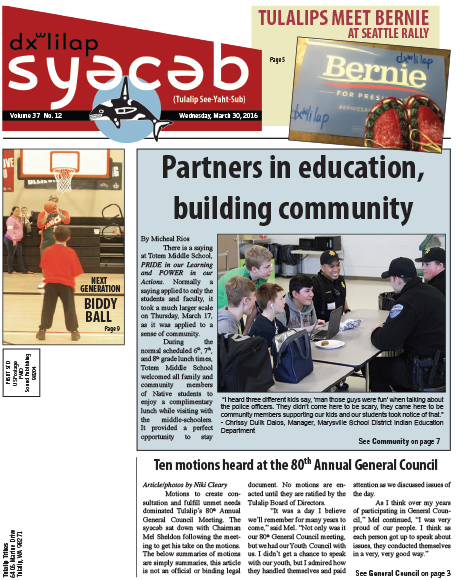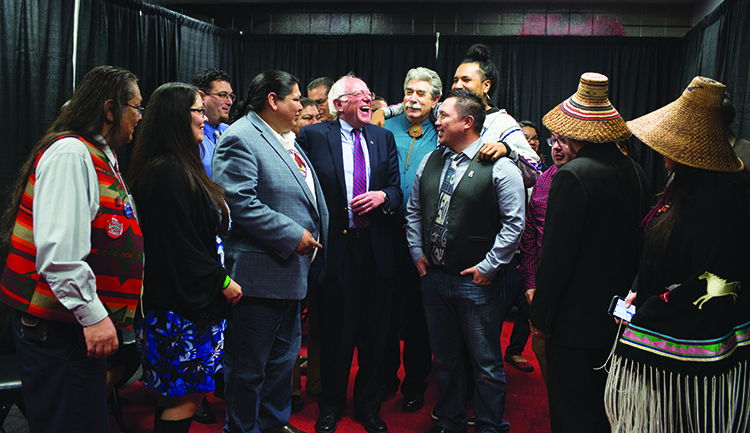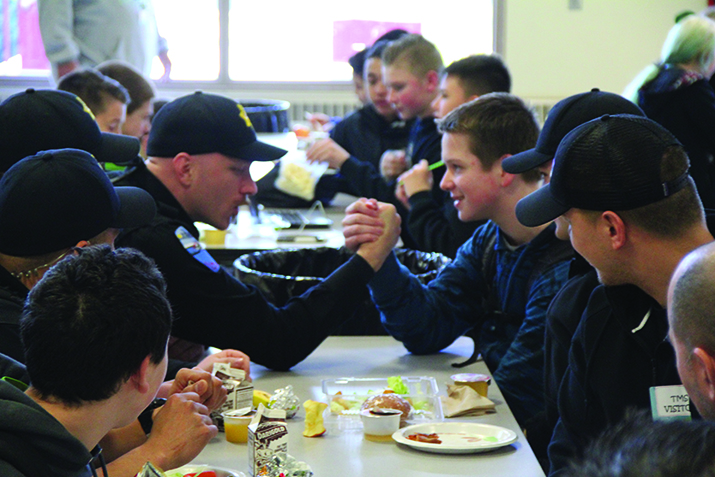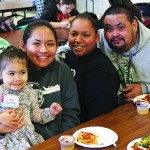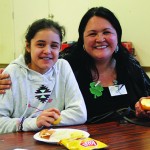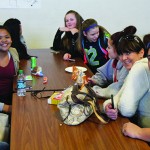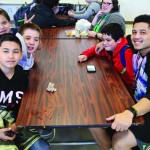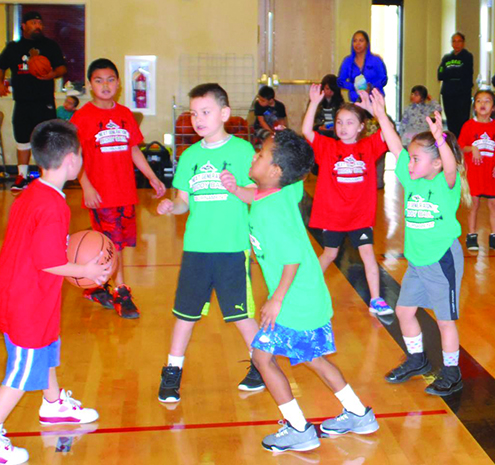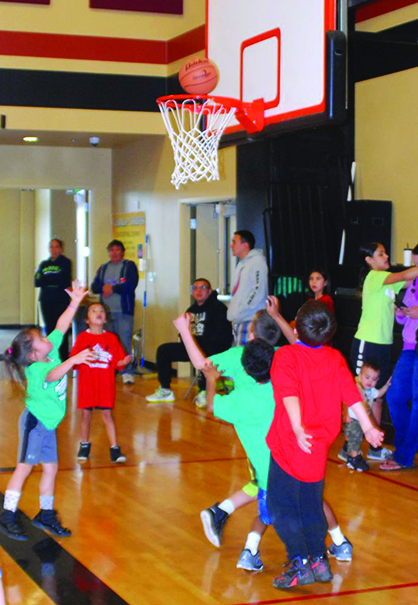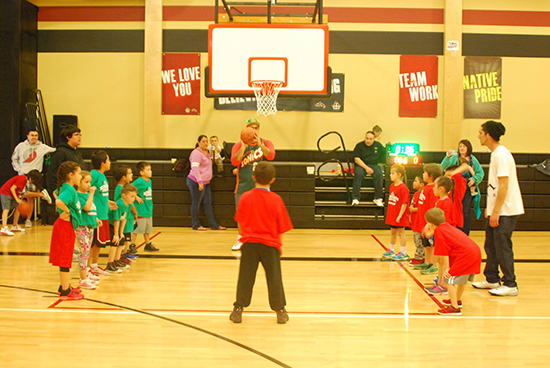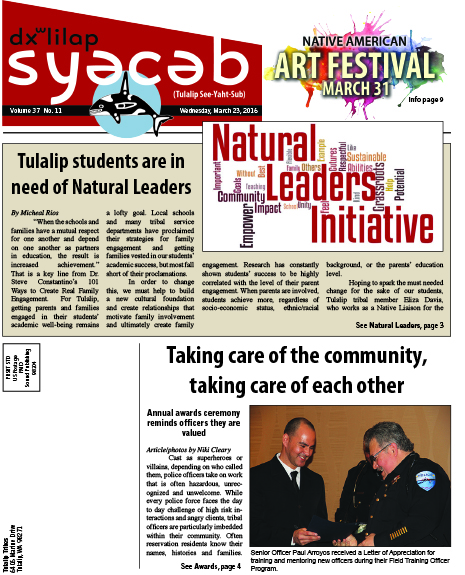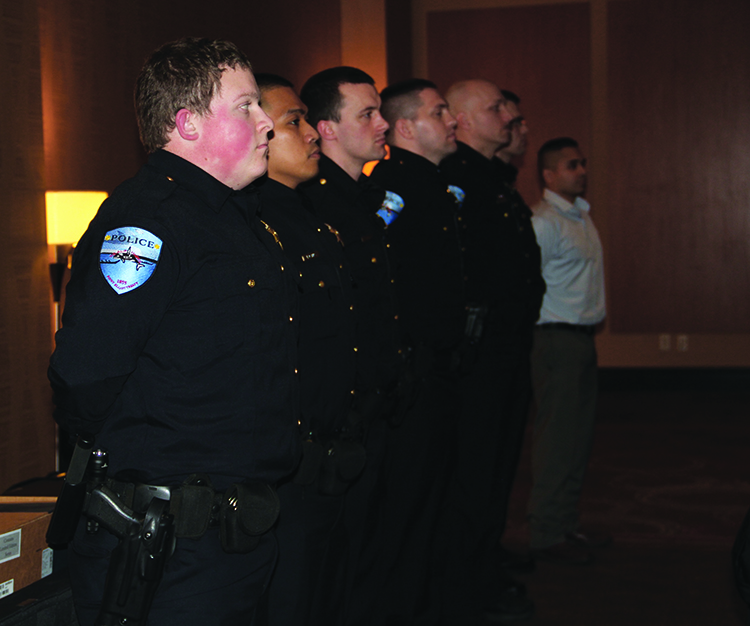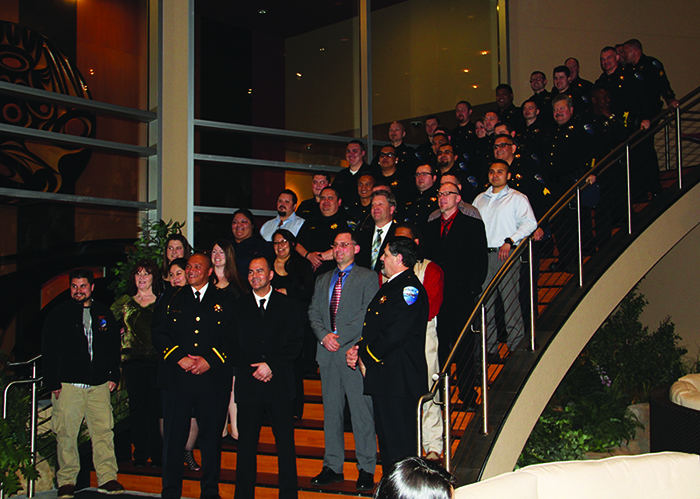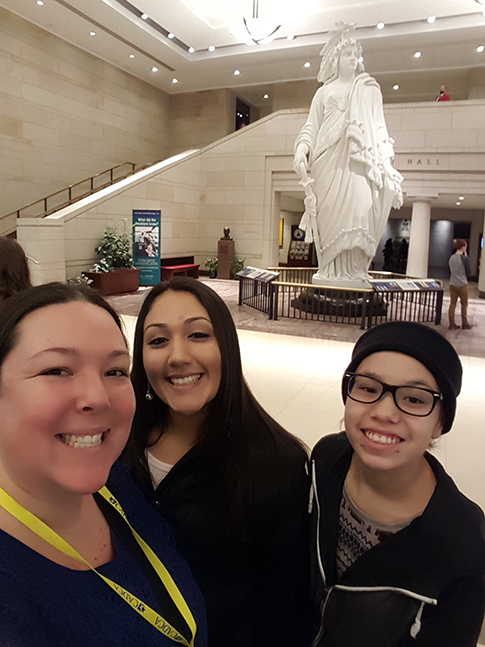Category: Tulalip News
Credit Building and Home Buying Seminar, March 31 & April 4
March 30, 2016 syəcəb
Tulalip feels the Bern
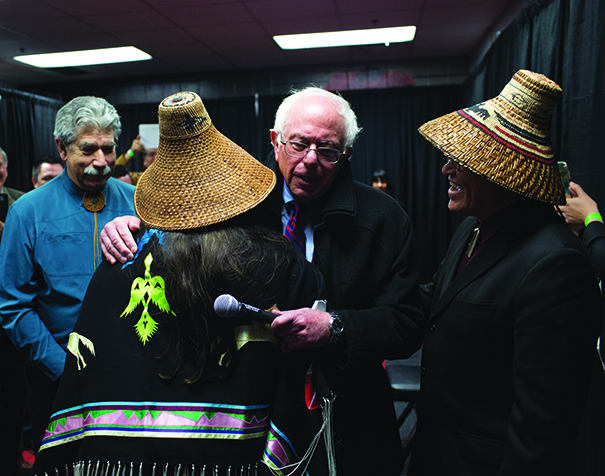
By Micheal Rios, Tulalip News; photos courtesy Nicole Willis
Native Americans are the first Americans, yet they have for far too long been treated as third class citizens. It is unconscionable that today, in 2016, Native Americans still do not always have the right to decide on important issues that affect their communities. The United States must not just honor Native American treaty rights and tribal sovereignty, it must also move away from a relationship of paternalism and control and toward one of deference and support. The United States has a duty to ensure equal opportunities and justice for all of its citizens, including the 2.5 million Native Americans that share this land. It is no secret that this isn’t the case today.*
“Time and time again, our Native American brothers and sisters have seen the federal government break solemn promises, and huge corporations put profits ahead of the sovereign rights of Native communities. As President, I will stand with Native Americans in the struggle to protect their treaty and sovereign rights, advance traditional ways of life, and improve the quality of life for Native communities,” states Democratic presidential candidate Bernie Sanders.
Sanders has repeatedly acknowledged the need to correct the U.S. history books and openly apologized for the wrongs done to Native people. It’s easy to understand why Natives from all across Indian Country are choosing to ‘feel the Bern’ and rally behind a candidate who honors us in such an honest and sincere manner.
Sanders continues to gain support and more momentum towards his bid for the White House, evident in his holding the largest political rally Seattle has seen since Obama in 2008. An estimated 18,000 people showed up at KeyArena on Sunday, March 20 to show their support for the Vermont senator.
Amongst his horde of supporters were many respected leaders and representatives of Coast Salish tribes, including Tulalip’s own Chairman Mel Sheldon and recently re-elected Board of Directors Theresa Sheldon and Bonnie Juneau.
“For the first time in my life a U.S. Presidential candidate spoke on Native American issues during his national platform. Elevating tribes to the national platform is a big deal,” says Theresa Sheldon. “It’s so important for tribes to be engaged and visible during this Presidential election. Our relationship is with the federal government, therefore we need to be present and participate in the civic process.”
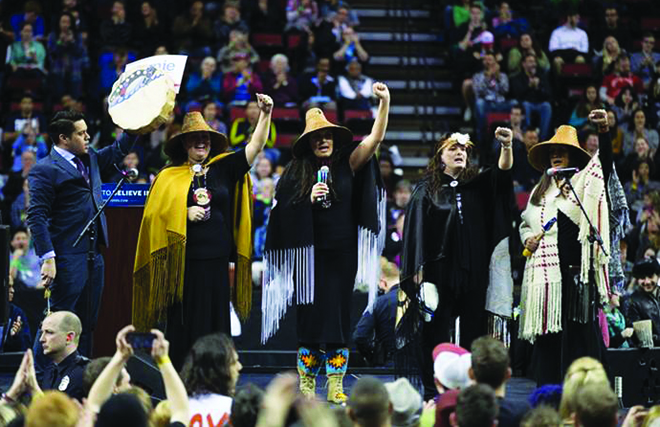
During the rally, five Tulalip tribal members (Theresa, Bonnie, Deborah Parker, Monie Ordania and Justice Napeahi) took center stage to perform the Women’s Warrior song.
“We are thankful the creator gave us an opportunity to sing the Women’s Warrior song from our First Nations relatives at the Bernie Sanders rally,” adds Theresa. “The Women’s Warrior song honors and acknowledges the missing and murdered indigenous women who have been taken from us way before their time.”
In a more private setting, Sanders met with a tribal delegation including NCAI President Brian Cladoosby, VAWA champion Deborah Parker and Yakama leaders including Asa Washines.
It was during this setting that the Coast Salish leaders honored Bernie Sanders with a Lushootseed name.
“Native American leaders named Bernie Sanders ‘δΞσηυδιϖυp’ (pronounced dooh-s-who-dee-choop),” Deborah wrote on Facebook. “This name is now bestowed upon Bernie Sanders and will be known among the Coast Salish people and beyond. The Lushootseed language meaning is ‘the one lighting the fires for change and unity.’ Thanking our Tulalip language teacher Natosha Gobin for helping us with Bernie Sanders Lushootseed name.”
According to Theresa, Sanders’ rally was historical for many reasons. Sanders has not only been a huge supporter of native issues, but he continues to stand shoulder to shoulder with tribes on such important issues as Violence Against Women and Oak Flats. He is an absolute protector of Mother Earth and he gives tribes total credit for the conservation and protection of the Earth that we do. If push comes to shove and the U.S. President has to make the call to either support treaty rights or to support corporate America and Army Corp of Engineers in the permit to build the coal terminal at Cherry Point, then you can guarantee that Sanders will go with treaty rights and support the tribes.
This is a huge shift that is happening nationally. Tribes are finally elevating themselves to the appropriate level, forcing mainstream media and corporate America to pay attention to us. When we are seen and heard by candidates, we can and will make a difference.
*source: https://berniesanders.com/issues/empower-tribal-nations/
Partners in education, building community
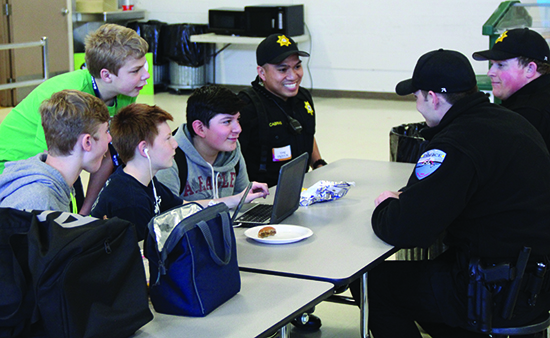
– Chrissy Dulik Dalos, Manager, Marysville School District Indian Education Department
By Micheal Rios, Tulalip News
There is a saying at Totem Middle School, PRIDE in our Learning and POWER in our Actions. Normally a saying applied to only the students and faculty, it took a much larger scale on Thursday, March 17, as it was applied to a sense of community.
During the normal scheduled 6th, 7th, and 8th grade lunch times, Totem Middle School welcomed all family and community members of Native students to enjoy a complimentary lunch while visiting with the middle-schoolers. It provided a perfect opportunity to stay connected with students, faculty, and friends while building something much larger – student success and identity safety.
“Part of identity safety is looking around the school and seeing people who look like you, knowing those around you, and feeling comfortable in a familiar setting,” says Chrissy Dulik Dalos, manager of the Indian Education Department for Marysville School District. “Our Native students go from being 80 percent of the population at Quil Ceda Tulalip Elementary to 20 percent here at Totem Middle School. We have to be vigilant that our Native students feel they are in an identity safe environment and one way of doing that is to ensure they recognize how important they are to our school’s community.”
Fostering a sense of community while also helping to bolster identity safety was particularly achieved by way of a simple open invite to have lunch. In order to get community members who Native students are comfortable with at their school and responsive to the invite, school officials went with the lunch hour. Understanding that a lot of folks are preoccupied in the late afternoon and evening hours, and not to pry into hours that may already be reserved, the time slot of 10:30 a.m. – 1:00 p.m. was chosen.
“We chose the lunch strategy to see if we could get more people involved,” continued Chrissy. “I think it paid off. We ended up with about 65 people that joined our students for lunch. That’s pretty phenomenal.”
That’s 65 Tulalip community members made up of family, friends, staff, Board of Directors, and law enforcements officers who took time out of their busy day to connect with the students. Spanning the lunch time, community members could be seen sharing a meal with the students, playing pool and foosball with them, simply chit-chatting, and even sharing in the craze that is March Madness. Students are allowed to use their Chomebooks for entertainment during their lunch. A few of the students managed to stream March Madness games and found themselves sharing their computer screens with several very attentive adults.
“For me, as an administrator, I have a strong belief that school is the center of the community, and this school has a unique location serving unique populations from Marysville and Tulalip,” explains Tarra Patrick, Principal of Totem. “So how do we create a situation where it is reconnected to the community? There is a power in breaking bread together. If you are a student here and you see your family come in and you see the principal and teachers deferring to your family, then you realize your family can come and advocate for you. This is an opportunity for the kids to also see the bridge between the school faculty, the students and their families, that’s what makes us a community.”
It really does all add up. Whether openly acknowledged or not, the Native students of Totem saw how many of their family and community members took the opportunity to spend time with them. And isn’t that what kids need the most? To feel valued by the adults around them, to know that they are important and that they matter. It’s not the sound of our words, but the POWER in our Actions that determines this.
We are all partners in education. From the teachers, secretaries, food preparers, maintenance workers, to family and friends we all have one common goal and that’s to see our students succeed. When we work together, every child can succeed in school.
Principal Tarra upholds that we all play a vital role in the success of our children and students as she stated, “It’s going to take the entire community together to support all of our students in order to help them be successful. That’s what today was about. It was just community, in this building, and it was absolutely beautiful.”
Contact Micheal Rios: trios@tulaliptribes-nsn.gov
Next Generation Biddy Ball
By Micheal Rios, Tulalip News
Tulalip hosted its quarterly biddy ball tournament on Sunday, March 20 at the Greg Williams court located within the Don Hatch Youth Center. The event was open to all kids ages 3-5 and 6-7 years old.
The Tulalip biddy ball program caters to the youngest generation of aspiring hoopers. It features lower nets, a shortened court, and is for young children who are just learning to play the game of basketball.
“It’s a popular sport in our community,” Deyamonta Diaz, Youth Activity Specialist, said following the day’s event. “We’re getting more and more people bringing their children out to learn and play biddy ball. There’s no previous experience necessary. We give them a fundamental style 5-on-5 game so they can learn how to play on a team .”
Biddy ball is really an instructional program setup for children of all level of experience to enjoy. There’s a lot of running around, basic skill sets, and learning the fundamentals of dribbling and shooting a set shot. During one session, the kids practiced drippling back and forth with then their dominant hand, then switched to dribbling with their other hand. While during another session they worked almost entirely on footwork.
The program at one point drew an estimated 50-60 kids. All the kids received a free t-shirt with ‘Next Generation Biddy Ball’ written across it.
Josh Fryberg, Youth Services Activities Coordinator, concluded the basketball-filled event by commenting, “Tulalip biddy basketball turned out great. Thank you everyone that showed up, especially the kids. All of us at Youth Services would like to continue to bring our community together in a good way. Because our biddy ball participation continues to grow we will expand our program so we are having biddy basketball once a month, the 3rd Sunday of each month from 12:00-3:00 p.m.”
Be on the lookout for more information on Tulalip’s biddy ball program in future issues of the syəcəb newspaper and on our Tulalip News Facebook page. If you have any questions or concerns call Tulalip Youth Services at (360) 716-4909.
March 23, 2016 syəcəb
Tulalip Mountain Camp, Aug 9-13
Taking care of the community, taking care of each other
Annual awards ceremony reminds officers they are valued
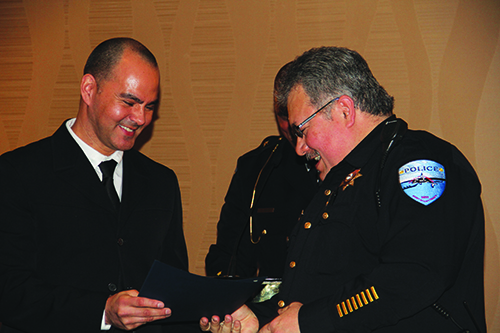
Photo/Niki Cleary
by Niki Cleary, Tulalip News
Cast as superheroes or villains, depending on who called them, police officers take on work that is often hazardous, unrecognized and unwelcome. While every police force faces the day to day challenge of high risk interactions and angry clients, tribal officers are particularly imbedded within their community. Often reservation residents know their names, histories and families. Calls for service can lead to hard feelings when an officer has such close ties to the population they are policing.
Commander Sherman Pruitt, who helps recruit new officers, literally asks the recruits at every stage of the hiring process if they still want to work for Tulalip.
“There’s a stigma around tribal law enforcement, the opinion that we’re not real law enforcement,” he said. “But times have changed, our tribal law enforcement officers are trained and educated and have the same authority as other agencies out there. I want our recruits to be fully aware, I don’t want them to have any doubts, any regret and I want them know who they’re going to be serving and what the department they’re working for.
“In that last set of people that we hired,” Commander Pruitt continued, “we have two with Bachelor’s degrees and they could have gotten hired at any agency. They chose to work here. I’m impressed with all the candidates we hired, they were very informed and did their research about what the Tulalip Tribes is about. They looked into the Point Elliott Treaty and went above and beyond in learning who they were going to be serving.”
The rewards of the job are rarely a straightforward ‘thank you,’ instead it’s the satisfaction of knowing the community is safer, or the admiration of a child who wants to be a police officer. Which is why, the department sets aside one night each year to acknowledge the hard work and heart that each officer puts forth and to honor employees who have gone above and beyond.
“We care about the community and we want to make a difference in their life,” explained Commander Pruitt, describing the department’s impact on citizens. “We’re part of the Tulalip Tribes family. I want them to know that. I may not be Tulalip, but I’m family. Do families argue, disagree? Absolutely, but that love we have for each other doesn’t change. We want our children to know this is a safe community and a thriving tribe.
“We want to assure them we protect their tribal rights and the community is safe. What I love about Tulalip is people are passionate. I don’t take the things they say personal because it’s very heartfelt. I understand what they’re going through, I love that they’re passionate people who express what they feel, but they care. They may not tell us at the time, but they tell us later that they care. I love that. To our officers, we need to be vigilant and aware, but at the same time compassionate and understanding.”
Asked why recognition is necessary, Police Chief Carlos Echevarria pointed out the behind the scenes work that his department is responsible for in addition to policing, including knowledge of constantly amended laws.
“Ever changing case law adds steps in the process,” he explained. “All officers are required to be knowledgeable of all updates daily. We print them out and go over them every shift.”
He explained that each of his officers possess unique strengths, the awards banquet is a way to let them know their efforts are appreciated.
“With training and experience come areas of expertise,” Chief Echevarria clarified. “For example some officers do a great job in identifying impaired drivers, some excel at being aware when criminal activity is afoot and then investigating, not letting it go unnoticed. The banquet gives us a chance to acknowledge and for the department to show appreciation for those individuals who go above and beyond on a daily basis.”
He lamented that it is always tough to choose the reward recipients, “While everyone does a great job, there are individuals that go above and beyond especially in specific areas. I truly appreciate their hard work day in and day out.”
In addition to recognition from their peers, Board of Directors added their praise to the evening.
“I want to thank our men and women who serve and protect this community each and every day,” said Tulalip Chairman Mel Sheldon. “Too many times we forget about our police until we need them. A lot of us remember when Tulalip was a ‘lawless’ place where predators came to commit crimes or ditch evidence. At that time calls to the other law enforcement agencies either got no response or brought a very heavy handed approach. Although it often goes unsaid, our officers are so very important to our community. Having a police force of such caring, passionate and focused individuals is a blessing.
Our officers take care of us no matter how scary the call, and they take care of us with simple things, like escorting our family members on their last journey during funerals. Rarely a day passes when I don’t see an officer going out of his or her way to help. Every month in the board room we hear the statistics and we know what our officers are faced with. To our officers, you are making a difference for our people, keep up the good work.”
Awards
Senior Officer Aaron Cook – Chief’s Award (10 years of Honorable and Faithful service to the Tulalip Tribal Police Department and the Tulalip Tribal Community)
Officer Charles Oxstien – Officer of the Year (The police officer who stood out from all the rest, who was a team player, who served our Tulalip Tribal Community and who also serves in the Army National Guard as an Army Ranger)
Communications Officer Allison Fogelstrom – Employee of the Year (Provided Outstanding Support by inputting Numerous Protection Orders into the National Database and provided Transcriptions to Detectives and Police Officers regarding investigative cases)
Certificates of Commendation
Detective Sergeant Wayne Schakel – Supervisor of the Criminal Investigation Unit and Drug Task Force, took on Criminal Cases and provided support to his subordinates on Tribal, State, and Federal Cases
Detective Garry Tilleson – Numerous Felony Arrests involving Drugs and Vehicle Seizures
Detective David Sallee – Investigated High Profile Cases and Supported the AUSA Prosecutor with Federal Court Case Convictions
Sergeant William Santos – Outstanding Supervisor who led by example and went above and beyond on mentoring his subordinates
Sergeant Jim Williams –Outstanding Supervisor who led by example and went above and beyond on mentoring his subordinates
Officer Tre’ Pruitt – Officer who had the most Recovered Stolen Vehicles within the Department
Marina Security Officer Robert McCracken – Provided assistance in Saving a Fisherman’s Life on a boat by administering CPR and an AED Device to the Fisherman until Medical Personnel
Evidence Technician Officer Donica Johnson – Outstanding Support of our Tulalip Tribal PD Staff involving taking on additional duties in making our department successful
Office Manager Ashlynn Danielson – Outstanding Support to Police Personnel and Staff, and Coordinator of Community Events
Letters of Appreciation
Senior Officer Jeremy Mooring – Great supporting Senior Officer who helped cover patrol shifts to help serve our Tulalip Tribal Community, he mentored our new officers and took on additional duties with no complaint, and Coaches Youth Sports
Senior Officer Paul Arroyos – Senior Officer who was responsible for training and mentoring our new officers in being successful during the Field Training Officer Program
Senior Officer Clayton Horne – Supervisor who was in charge of Saving a Fisherman’s Life on a boat
Communications Officer Allison Fogelstrom – Dispatcher who goes above and beyond their duties in keeping the morale up with the Police Personnel on their professional career and personal life
Communications Officer Sadie King– Dispatcher who goes above and beyond their duties in keeping the morale up with the Police Personnel on their professional career and personal life
Girls Group gains leadership experience in D.C.

By Micheal Rios,Tulalip News; photos courtesy of Sasha Smith, Tulalip Family Haven Project Coordinator
The Community Anti-Drug Coalitions of America (CADCA) held its 26th annual National Leadership Forum and Prevention Days at the Maryland Convention Center during February 1 – 4. CADCA is the national membership organization representing over 5,000 coalitions and affiliates working to make America’s community safe, healthy and drug-free.
Count Tulalip among those communities represented by CADCA, as Tulalip tribal members Elizabeth Edelman and Priscilla Bumgarner attended this year’s leadership forum. Elizabeth and Priscilla, both 15 years old, were afforded the opportunity to attend thanks to their frequent participation in Girls Group.
Girls Group, comprised of young Native women ages 14-17, is designed through Tulalip Family Haven and is located next to the Tulalip Boys & Girls Club. Girls Group aims to provide Native girls the support they need to become the most successful person they can be.
“In selecting the two young ladies to take to the prevention conference and tour Washington, D.C., we based the decision off of overall participation and best attendance at Girls Group,” says Sasha Smith, Project Coordinator at Family Haven, who chaperoned Elizabeth and Priscilla on their trip. “These girls were so excited to get the chance to travel. Elizabeth had never been on an airplane before and neither had ever been so far from home without their parents”
The young ladies spent four days in Maryland and Washington, D.C. learning about reducing drug and alcohol use in their community, how to be a positive and supporting leader, and gaining life experiences on the other side of the country. They received helpful information about different groups and communities who have been successful in reducing substance abuse.
“Better environment, better future,” recalls Elizabeth is the line that really stood out from the seminars she attended. “It’s so true. If nobody cared about their surroundings and the environment then things can’t get better, they’ll only get worse. If you care about your future then you’ll care about your environment, who and what you have around you.”
A project they got to participate in, and may even do here at home, was a sticker project. The youth, armed with message carrying stickers, went around to local liquor stores and convenient stores placing stickers on alcohol products, as a way to remind buyers that underage drinking and purchasing for minor is illegal.
Another idea they participated in was being part of a high school student panel dubbed the Myth Busters. They held a Q & A session for middle school students who are in transition to high school. The middle schoolers were able to ask any and all questions they had about the high school experience, most of which were debunked as myths by the current high schoolers.
Of all their experiences during the four days away from home, the most lasting was getting a guided tour of the capital, which included taking a three hour night tour of all the historical monuments.

“The entire experience was pretty cool. Being out of here and off the rez everything was new, it felt like a vacation,” said Elizabeth. “Touring the capital and seeing the Lincoln Memorial was most memorable for me. And learning about Billy Frank, Jr. He has his own exhibit in the Museum [of the American Indian].”
Girls Group meets every Monday, Tuesday, Wednesday and Thursday from 3:30p.m. – 6:30p.m. and is free to join. For more information on the Family Haven Girls Group or how to sign up, please contact project coordinator Sasha Smith at 360-716-4404.




